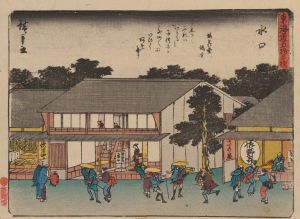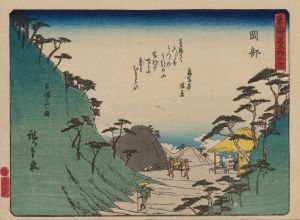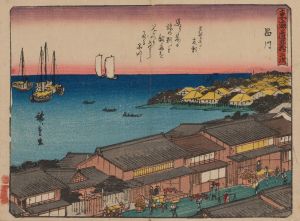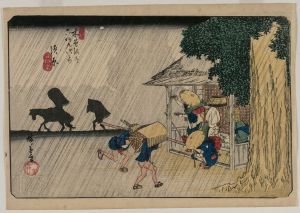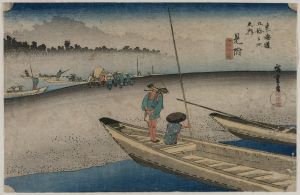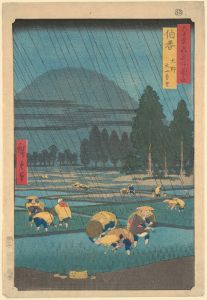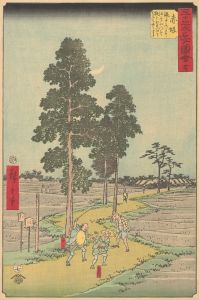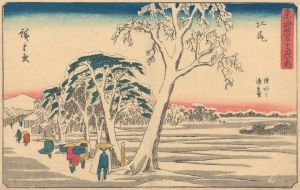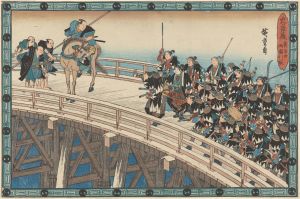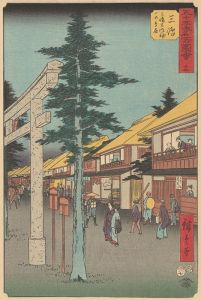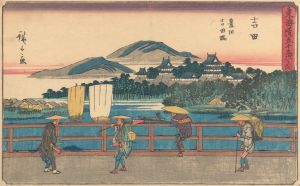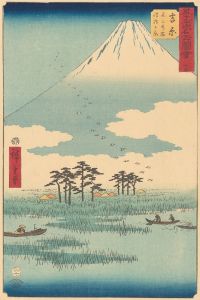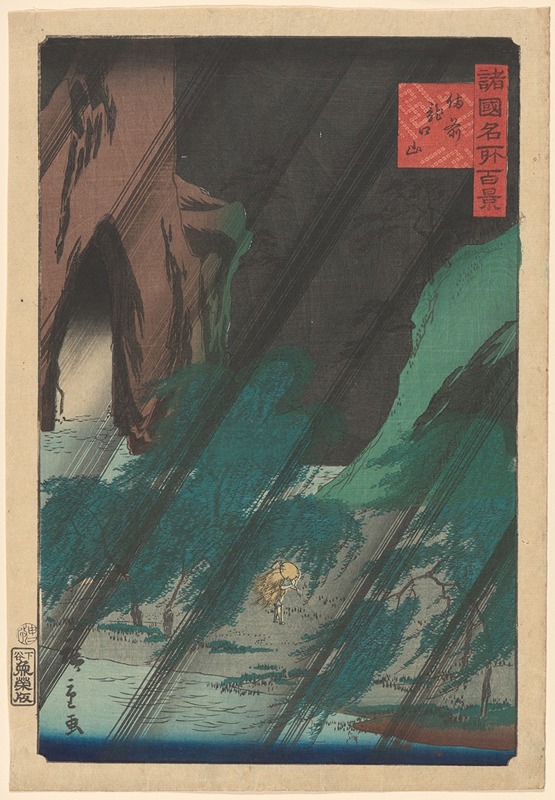
View in Rain
A hand-painted replica of Andō Hiroshige’s masterpiece View in Rain, meticulously crafted by professional artists to capture the true essence of the original. Each piece is created with museum-quality canvas and rare mineral pigments, carefully painted by experienced artists with delicate brushstrokes and rich, layered colors to perfectly recreate the texture of the original artwork. Unlike machine-printed reproductions, this hand-painted version brings the painting to life, infused with the artist’s emotions and skill in every stroke. Whether for personal collection or home decoration, it instantly elevates the artistic atmosphere of any space.
Andō Hiroshige, a prominent Japanese ukiyo-e artist of the Edo period, is renowned for his landscape prints and innovative compositions. One of his notable works is "View in Rain," which exemplifies his mastery in capturing the transient beauty of nature and the atmospheric conditions that define the Japanese landscape.
"View in Rain" is part of Hiroshige's larger body of work that often focuses on the interplay between weather and scenery. Hiroshige was known for his ability to depict rain, snow, and mist with a poetic sensibility that resonated deeply with viewers. His prints often evoke a sense of tranquility and introspection, inviting the audience to appreciate the subtle nuances of the natural world.
In "View in Rain," Hiroshige employs his characteristic use of perspective and composition to draw the viewer into the scene. The print likely features a landscape shrouded in rain, with figures and elements of nature harmoniously integrated into the environment. Hiroshige's use of color and line work would have been meticulously crafted to convey the mood and atmosphere of a rainy day, capturing the essence of the moment with simplicity and elegance.
Hiroshige's technique in depicting rain often involved the use of fine, diagonal lines to represent falling rain, a method that became a hallmark of his style. This technique not only adds a dynamic quality to the composition but also enhances the sense of depth and movement within the scene. The artist's attention to detail and ability to convey the ephemeral nature of weather conditions are evident in the way he portrays the interaction between rain and the landscape.
The cultural context of Hiroshige's work is deeply rooted in the Edo period, a time when Japan experienced significant urbanization and a flourishing of the arts. Ukiyo-e, which translates to "pictures of the floating world," was a genre that captured the everyday life and landscapes of Japan, making art accessible to a broader audience. Hiroshige's landscapes, including "View in Rain," reflect the Japanese aesthetic principles of wabi-sabi, which appreciate the beauty of impermanence and imperfection.
Hiroshige's influence extended beyond Japan, impacting Western artists such as Vincent van Gogh and Claude Monet, who admired his compositions and use of color. His work played a significant role in the Japonisme movement in Europe during the late 19th century, which saw Western artists incorporating Japanese elements into their own art.
While specific details about "View in Rain" may be limited, the work remains an exemplary piece within Hiroshige's oeuvre, showcasing his ability to transform simple scenes into profound expressions of nature's beauty. Through his innovative techniques and artistic vision, Hiroshige has left a lasting legacy that continues to inspire and captivate audiences worldwide.





